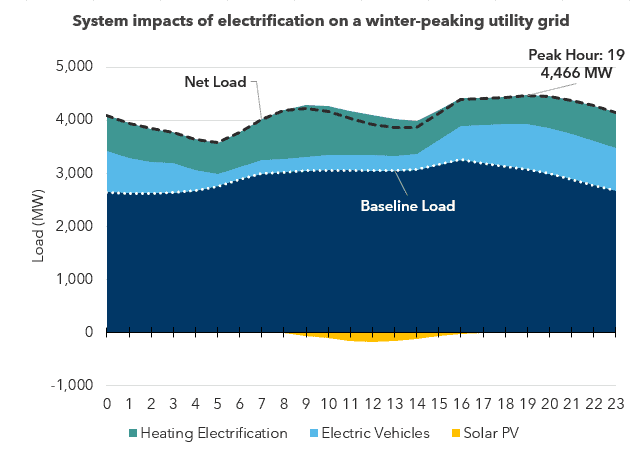As governments set policies to support emission reduction targets and as consumers switch to electric vehicles (EVs), utilities are literally fuelling the transition and becoming critical players in the transportation sector.
Utilities are playing a key role in enabling and supporting the adoption of EVs through actions like investments in charging infrastructure and educational resources, but they are first-and-foremost responsible for accommodating the load impacts associated with the increasing number of EVs in their territories. Dunsky has been supporting utilities to prepare for this transition, leveraging our EV Adoption Model (EVA) in over a dozen markets, including California, Massachusetts, Ontario, Quebec, and Colorado.
Utilities require nuanced EV assessments that highlight the potential for uptake of EVs within different vehicle segments (e.g. passenger vehicles and commercial light-,medium- and heavy-duty vehicles) and regional distribution of that adoption across service territories, from municipal and ZIP / postal code level all the way to individual substations and feeders. Through this nuanced analysis, we have been able to provide our clients with data to inform load impact assessments which estimate hourly-level load from EV charging for different subsets of the transmission and distribution system to assess peak impacts.

Although each utility and jurisdiction has unique characteristics, common lessons can be learned from our experience, including:
- EV load impacts will not be homogenous within a utility’s service territory. Our analyses find that several key factors, including socio-demographics and access to home charging, influence regional variations of EV adoption. A number of additional variables also impact local charging needs (e.g. typical driving distances, location of public charging stations).
- The pace and magnitude of gross (i.e. unmitigated) load growth will be significant and have serious impacts on system load patterns (in some cases, even shifting certain jurisdictions from summer to winter peaking regimes within a few years) and system investments (triggering large investments and early upgrades).
- There is significant potential for cost-effective EV load management opportunities that can serve as non-wire alternative (NWA) solutions to avoid or defer system upgrades that would be triggered by unmitigated charging loads.
EV adoption across a service territory will not be homogeneous and a cookie-cutter approach to forecasting EV adoption and loads will not be sufficient for utilities to clearly understand and plan for the potential grid and investment impacts of EVs. To learn more about Dunsky’s experience and approach to supporting utilities in the transition to electric mobility, contact info@dunsky.com.


